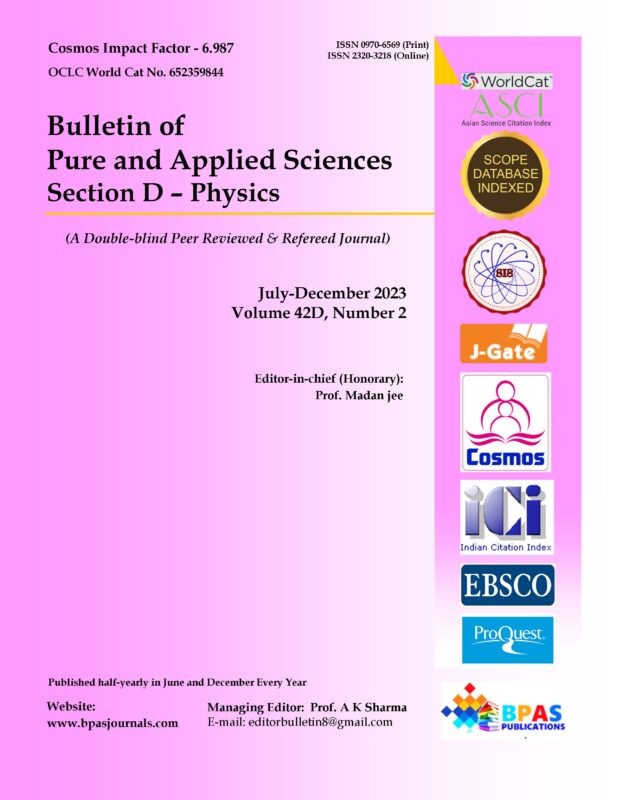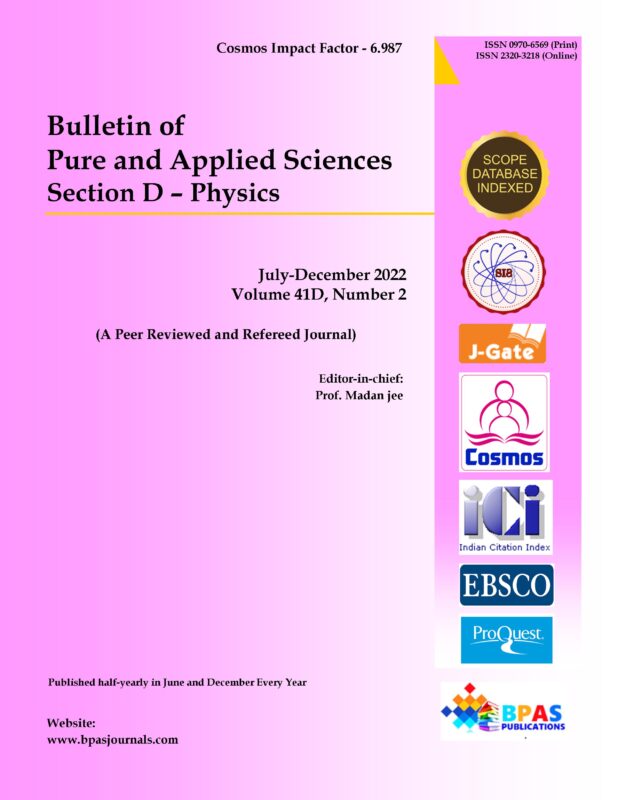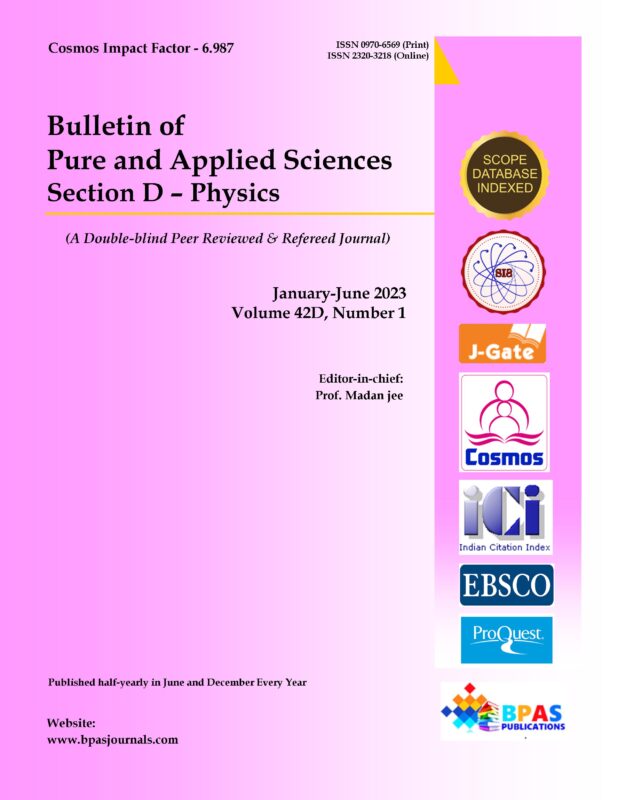Strong Correlation Effects and Localization in Metallic Systems
9.38$
Amita Sharma*
Bulletin of Pure and Applied Science
Physics, Vol.41D No.2,
July-December 2022 P.65-69
DOI: 10.5958/2320-3218.2022.00013.6
Original Research Article
Description
Strong Correlation Effects and Localization in Metallic Systems
Amita Sharma*
Author’s Affiliations:
Department of Physics, R. D. S. College, Muzaffarpur, B.R.A.B.U., Muzaffarpur, Bihar 842001, India.
*Corresponding author:
Amita Sharma
Department of Physics, R. D. S. College, Muzaffarpur, B.R.A.B.U., Muzaffarpur, Bihar 842001, India.
E-mail: dramitasharma63@gmail.com
How to cite this article: Sharma A. (2022). Strong Correlation Effects and Localization in Metallic Systems. Bulletin of Pure and Applied Sciences- Physics, 41D (2), 65-69.
Received on 28.04.2022
Revised on 21.09.2022
Accepted on 29.10.2022
Published on 15.12.2022





